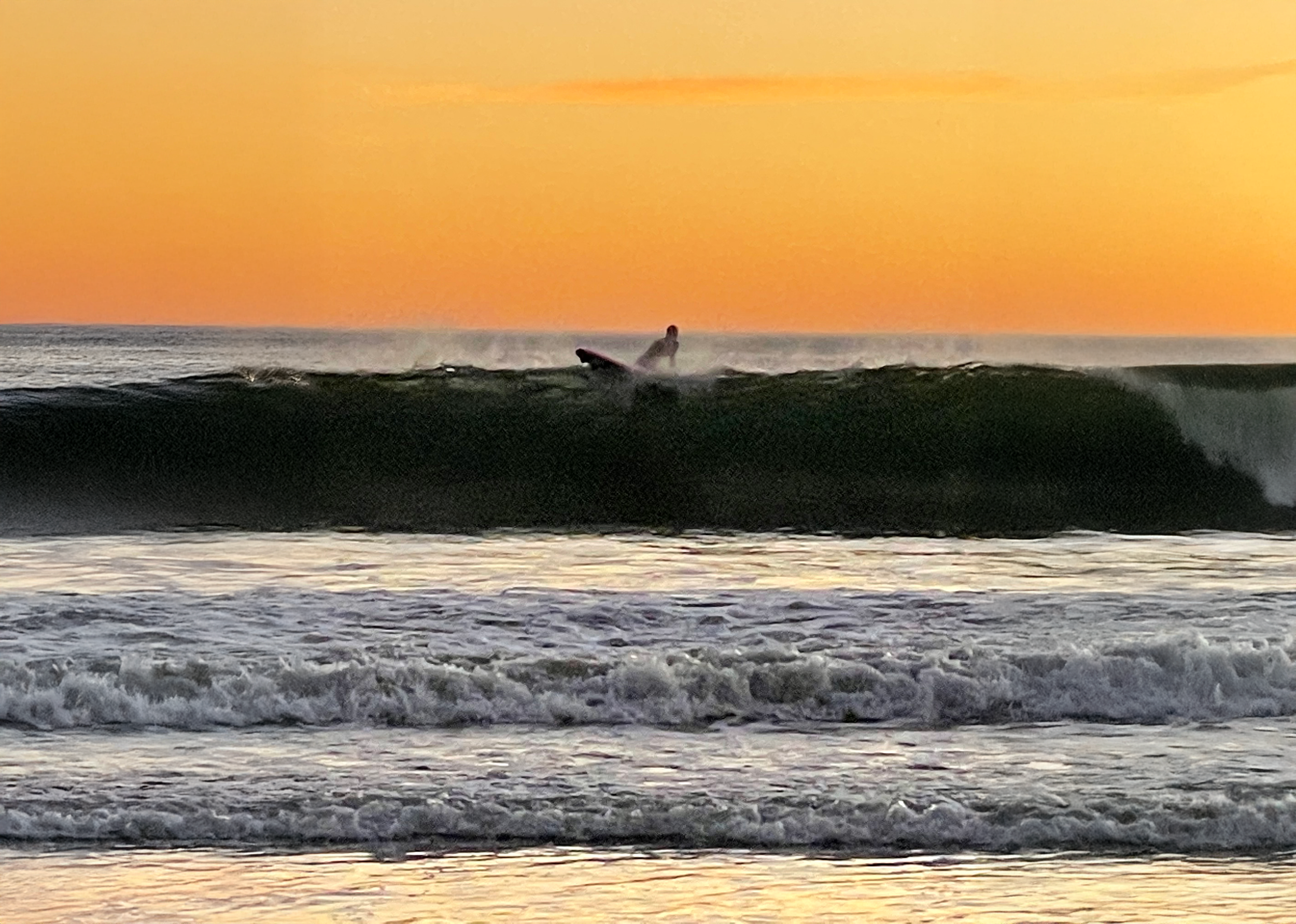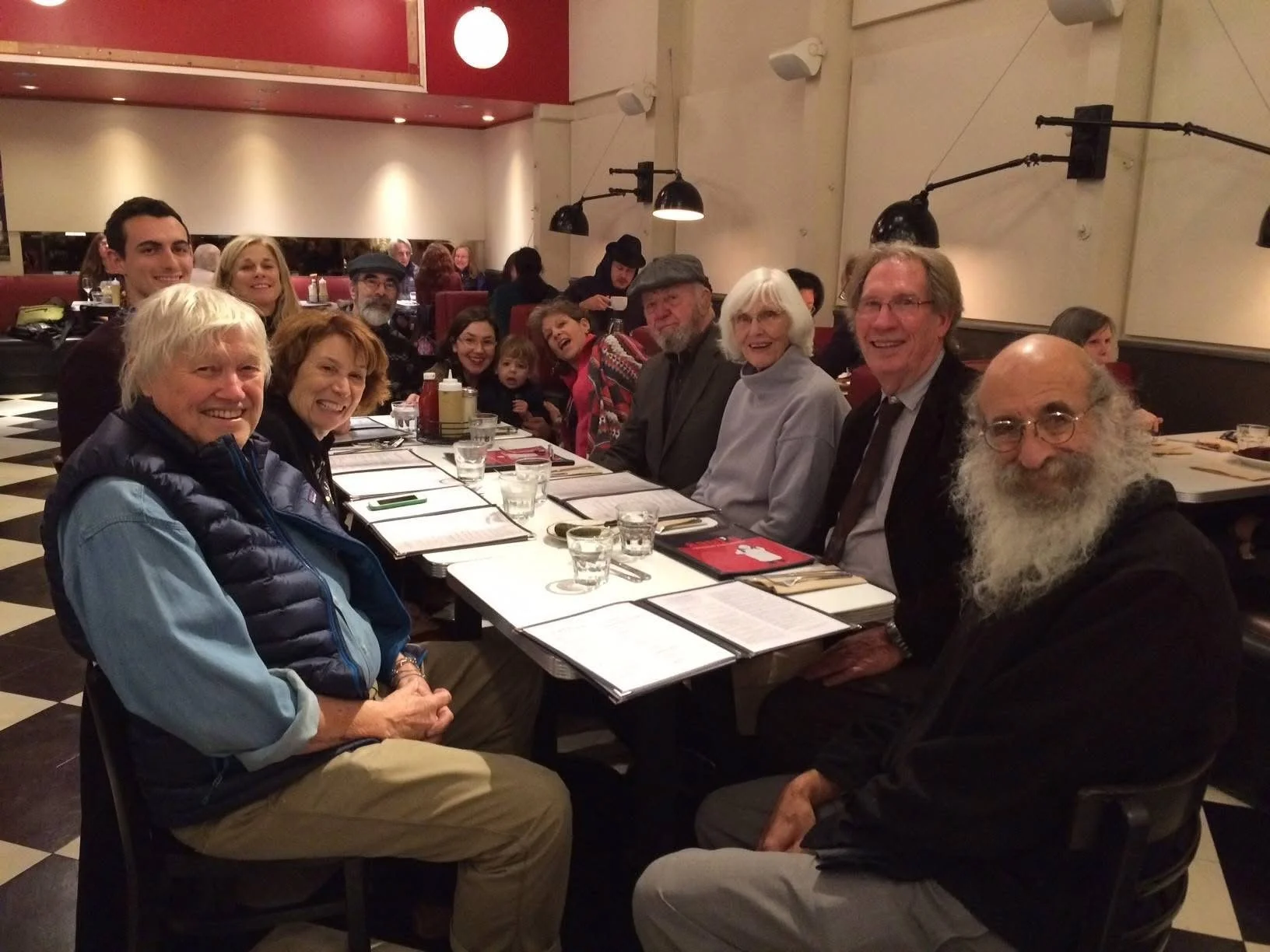RRI Newsroom
From Posts to Purpose: What I Learned About Environmental Communication Interning at RRI
Written by Caspar von Alvensleben. “Over the past semester, I have interned with RRI, working on projects like social media management, website development, and broader digital media strategy.”
When Politics Erases History: Why We're Fighting Secretarial Order 3431
Public lands are more than landscapes; they carry the stories that shape our national identity. We have joined a coalition of over 100 organizations urging Secretary of the Interior Doug Burgum to rescind Secretarial Order 3431, deceptively titled “Restoring Truth and Sanity to American History.”
In Memory of Malcolm Margolin, Beloved Friend and Storyteller
We at RRI are deeply saddened by the passing of our dear friend Malcolm Margolin. A brilliant publisher, master storyteller, and longtime ally, Malcolm’s connection to our founder, Huey Johnson, runs deep. Their friendship stretches back to when Huey awarded Malcolm a grant to write his very first book, sparking the extraordinary journey that became Heyday Books.
Why We Stand United Against AB 1038: Protecting Bears, People, and the Public Trust
We’ve joined dozens of animal welfare, environmental, and tribal advocacy organizations in formally opposing Assembly Bill 1038—a bill that threatens to undo one of California’s most significant wildlife protections by reinstating the inhumane practice of hounding bears.
RRI Joins Over 70 Organizations Supporting Historic Coastal Protection Action
RRI joins a powerful coalition of over 70 environmental organizations defending landmark protections for more than 625 million acres of public waters from new offshore oil and gas drilling. This historic action safeguards critical coastal areas while protecting marine ecosystems and the millions of jobs that depend on healthy oceans.
Why We March to #EndFossilFuels
The Resource Renewal Institute joins over 600 organizations in endorsing the March to End Fossil Fuels, which is taking place ahead of the UN Climate Ambition Summit.
You have to do what is right
One year ago, the environmental movement lost Huey Johnson. Huey’s 60-year career as an environmental leader and innovator, his integrity and his persistence left a tremendous legacy and stand as a guidepost for getting things done for the environment. At Resource Renewal Institute (RRI), the nonprofit Huey founded in Marin 35 years ago, his spirit and lessons are an ongoing source of inspiration. Sorting through some old files I came upon a letter from former Governor Jerry Brown, who appointed Huey as California’s Secretary of Natural Resources. In it, Brown quotes Huey who, he says, imparted to him an important political lesson, “When it comes to the environment, it’s not enough to do what works–you have to do what is right”.
On World Environment Day: A Vision for a Restored Point Reyes National Seashore?
Today, June 5, is World Environment Day and official launch of the United Nations Decade on Ecosystem Restoration— a rallying cry to reverse the degradation of our planet and help Nature heal.
At RRI, we’re reminded of our beloved colleague, Professor Wangari Maathai, (1940-2011), founder of the Greenbelt Movement of Kenya. As a scientist, a government critic, and an environmental activist, Wangari endured gender bias and persecution by those in power. And yet, she persisted—planting more than 51 million trees in Kenya, restoring forests and improving the lives of rural women across Africa.
Tamál Húye: Coast Miwoks Fight for Recognition of Point Reyes’ Indigenous History
On April 22, the California Coastal Commission held a virtual hearing to discuss the impact of dairy and cattle ranching at Point Reyes National Seashore. Superintendent Craig Kenkel began his presentation with the words, “Point Reyes is the ancestral home of the Coast Miwok.” Kenkel spent the rest of his talk advocating for a Park Service proposal to increase the terms of ranching leases from five to 20 years. This, despite the findings of an Environmental Impact Statement released by the National Park Service last year which revealed multiple harms caused by 150 years of bovine-centric agriculture at the seashore.
Conservation Groups Petition Park Service to Tear Down Elk Fence at Point Reyes
Citing an ongoing die-off of rare Tule elk at the Tomales Point Elk Reserve on Point Reyes National Seashore, conservation and animal advocacy groups today filed a formal petition with the National Park Service to remove an eight- foot-tall fence that confines the park’s main elk herd to a narrow peninsula that lacks adequate water and forage during droughts.
What, Me Worry? - NPS Appoints Kenkel for Point Reyes
As the Trump Administration continues to shuffle National Park Service personnel, Craig Kenkel has been named the Superintendent at Point Reyes National Seashore, replacing Superintendent Cecily Muldoon and a parade of Acting Superintendents.
The Killing of a Native Species
Resource Renewal Institute is proud to present our new film about Point Reyes National Seashore (8 minutes). Confined by a fence, Tule elk at Point Reyes National Seashore are in mortal danger as their water sources dry up. Half the herd died during the 2014-2016 drought. The park’s biologist referred to the die off as “letting nature take its course.” There’s nothing natural about denying water to confined animals. The just-released management plan (described below) calls for shooting wild elk to ensure enough grass for the nearly 6,000 cattle that graze the park.
Reflections on the 58th Anniversary of Point Reyes National Seashore
As a boy I was witness, a fly on the wall, to the creation of Point Reyes National Seashore. Through the prolonged labor that preceded the birth of this extraordinary park, I became acquainted with the cast of characters who fought to bring it into existence—the first, and still the only—national seashore on the West Coast.
Environmental Titan Huey D. Johnson Dies at 87
For six decades Huey D. Johnson was a steadfast force for nature, protecting wild rivers and securing millions of acres of land as Western Regional Director of the Nature Conservancy, and later as its president; as founder of the Trust for Public Land and as California’s Secretary of Resources, where he spearheaded “Investment for Prosperity,” a 100-year plan that became a blueprint for sustainability programs worldwide.
Livestock at National Seashore Raises Public Health Concerns
In comments to the NPS’s draft plan for ranching at the Point Reyes National Seashore and Golden Gate National Recreation Area (GGNRA) the Resource Renewal Institute and Western Watershed Project raised concerns about the public health risks of Johne’s Disease, a contagious and chronic intestinal disease that afflicts cattle—particularly dairy cows. Other ruminants, domestic and wild—deer, sheep, goats, antelopes, elk—also are susceptible.
The Public Wants Elk, Not Ranches! The question is, is the NPS even listening?
Ranchers and politicians have long claimed that there is overwhelming public support for ranching at Point Reyes National Seashore and GGNRA, but have never offered any evidence to support their claim. The 7,627 public comments to the National Park Service’s (NPS) draft General Management Plan Amendment (GMPA) and Environmental Impact Statement (EIS) for ranching in these parks say otherwise.
More than 90 percent of the comments submitted to the NPS oppose ranching.
The Great Giveaway Continues
Driven to near extinction, northern elephant seals have made a remarkable comeback— from as few as 100 in the 1920s to about 124,000 in California today. The seals give birth at Point Reyes National Seashore, where the National Park Service goes to great lengths to protect them from human disturbance. If only the Park Service would show such concern for the Seashore’s other rare wildlife, like the park’s iconic Tule elk.
Please Don’t Shoot!
Your comments are critical to the NPS’s Draft Plan for cattle ranching at Point Reyes National Seashore. Dairy and beef cattle ranching has a long history at Pt. Reyes. When the Seashore was established in 1962 there was opposition from the ranching families, but they eventually agreed to a buyout-leaseback arrangement with the National Park Service. The ranchers were generously compensated for their land (more than $300 million in today’s dollars), and it was agreed that they could remain in park for their lifetime or 25 years.
Proposed Point Reyes Seashore Plan a Giveaway to Ranchers
The National Park Service (NPS) has released its Draft General Management Plan (GMPA) and Environmental Impacts Statement (EIS) for ranching at Point Reyes National Seashore. This is the first time in the park’s history that ranching has been subjected to a full review of its environmental impacts, and the first time the public has had an opportunity to submit comments to the park’s ranching policy. The public has until September 23 to send comments.
Food Festival Draws Ranchers’ Ire
Event organizers reached out to us about publicizing the Mindful Eating Film Festival and Expo after the posters they put up around the county were torn down. Some ranchers strongly objected to the event and screening such films as “Cowspiracy: The Sustainability Secret,” and "The Shame of Point Reyes” which are critical of ranching. In response, organizers have invited Seashore ranchers to participate on a panel with the filmmakers to discuss the issues raised in the films.




















